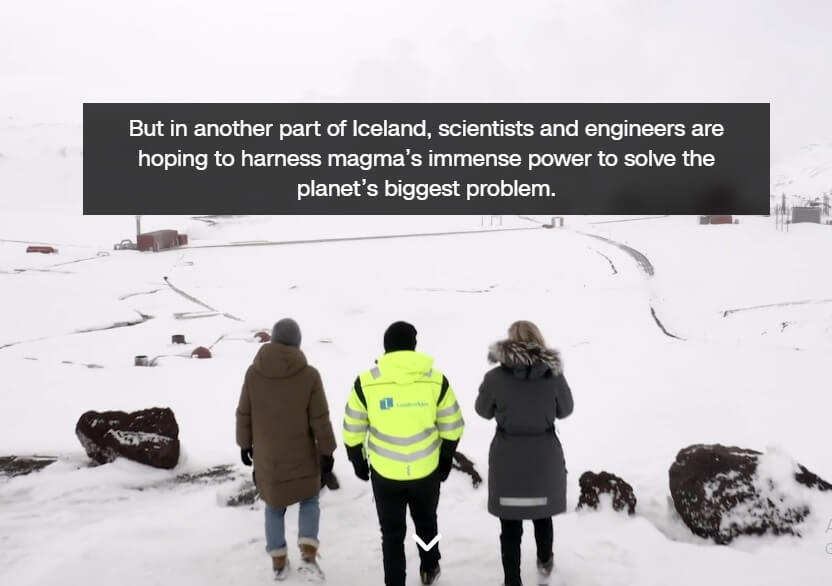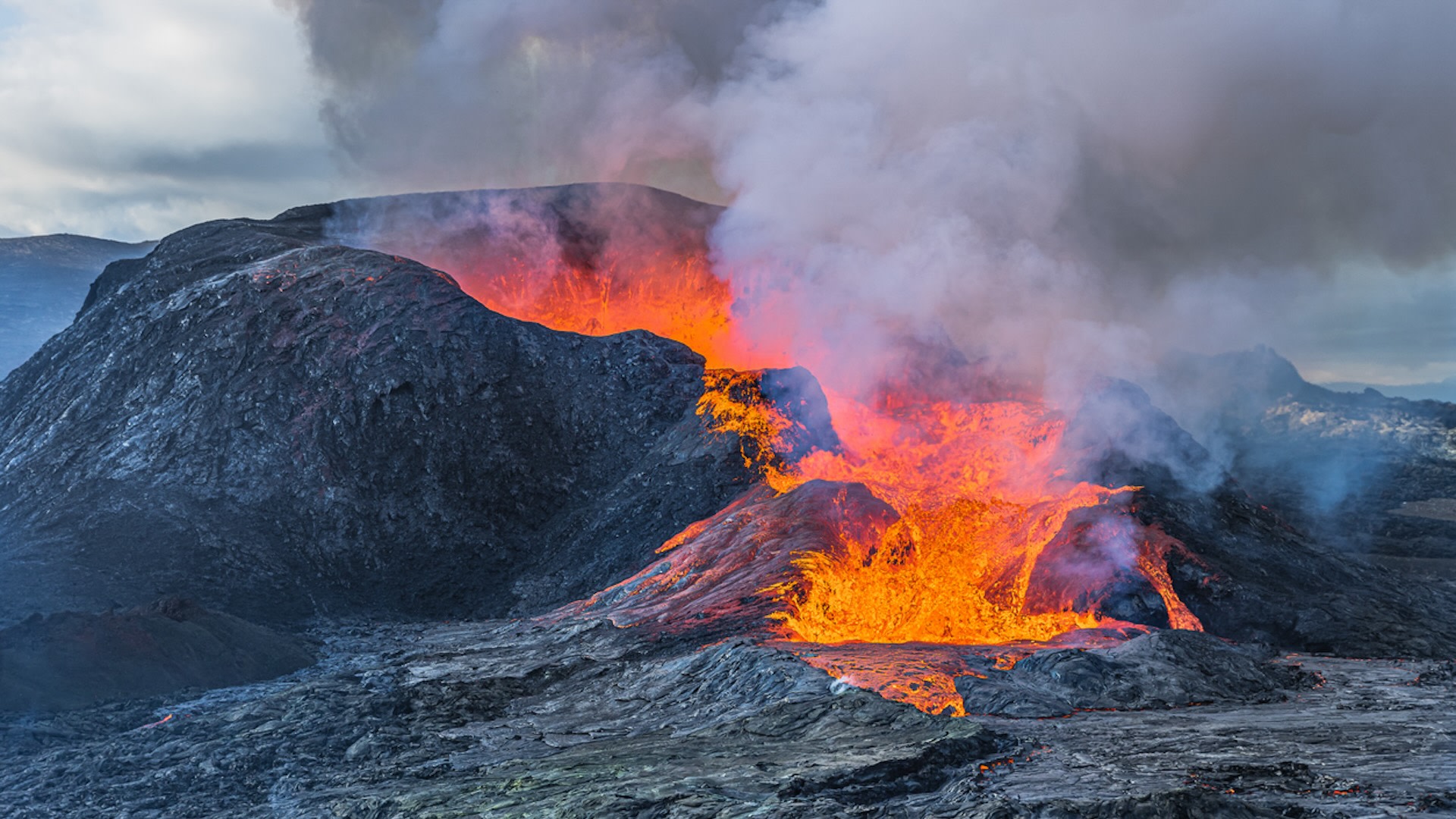Underneath Iceland's sometimes snowy surface is a boiling cauldron of superheated magma. It's a bane to residents who are at risk because of recently increasing volcanic activity, evidenced by upheaved roads and other carnage shared in an expansive CNN report.
"... It's swallowing homes and forcing thousands to flee," the narrator of the interactive story said.


But the lava also has the potential to solve a critical energy problem. The molten rock can produce enough heat to create geothermal power without planet-warming air pollution if it can be successfully tapped.
That's why experts are planning to drill into Iceland's ground to study the conditions below. About 800 million people live within approximately 60 miles of a live volcano. If scientists can figure out how to utilize this natural resource, it could be game-changing for worldwide power supplies, per CNN.
"Basically, the potential is limitless," Geothermal Research Cluster Director Hjalti Páll Ingólfsson added in the report.
Iceland was formed long ago in the North Atlantic by lava flows. It's still a volatile environment for geothermal experts to conduct experiments, as noted by Live Science, CNN, and the Icelandic Meteorological Office (Met).
The plan is to start boring holes into the ground to tap the 1,800-degree Fahrenheit magma reserves. The initial one is set to be drilled in 2027. In a first, the experts will put sensors in the subterranean lava flow, gaining knowledge of its movements, pressure, and chemistry, per CNN.
Volcanoes "remain unknown by nature," Met volcanic hazards coordinator Sara Barsotti said in the story.
The magma chamber is more than 6,800 feet below the surface. For reference, the Empire State Building is 1,454 feet tall. Once at the chamber, a smaller hole is used to enter the lava flow. Heat pulled from the environment can be used to generate electricity on the surface using a steam turbine in a continuous cycle, all per CNN.
🗣️ Do you worry about companies drilling too deep into the ground?
🔘 Definitely 💯
🔘 Depends on what it's for 🤔
🔘 Only if it's near my home 🏠
🔘 Not really 😎
🗳️ Click your choice to see results and speak your mind
While it's a more expensive process than current geothermal tech, the much deeper wells and magma generate far greater heat, requiring fewer boreholes to make significant power. Two magma boreholes could replace 18 conventional geothermal ones in Iceland that electrify 30,000 households, the report continues.
Geothermal innovations are advancing in other amazing projects around the world, as well. Massachusetts-based Quaise Energy intends to drill 12 miles into the Earth to tap what it calls a "million-year energy source," as another example.
The result could be abundant energy with far fewer planet-warming repercussions. That's because burning fossil fuels for power has contributed to rising temperatures, creating a greater risk of severe weather, as noted by NASA experts.
Fortunately, there are immediate ways to take action in any location.
A heat pump unit can be easily added to your house. It's a great way to leverage the latest heating/cooling tech for homes that don't exist above a magma pit. Heat pumps can save you about a grand each year on energy costs while cutting air pollution. What's more, valuable tax credits can save you loads of cash on the installation cost.
In the future, the California coast, Japan, and even locations in the Mediterranean are some of the places being eyed as magma-based energy sites, according to CNN.
The first step is to better understand Earth's powerful volcanoes.
"We are looking into the sky, we are spending trillions and trillions of dollars to understand planets far away," Ingólfsson said in the story. "But we do not spend nearly as much on understanding our own."
Join our free newsletter for weekly updates on the latest innovations improving our lives and shaping our future, and don't miss this cool list of easy ways to help yourself while helping the planet.









